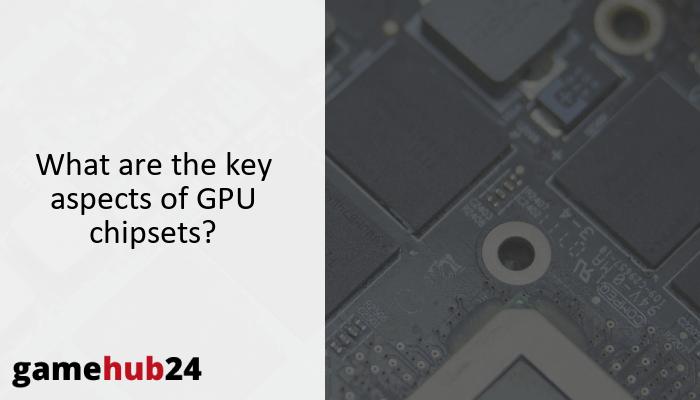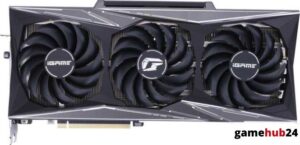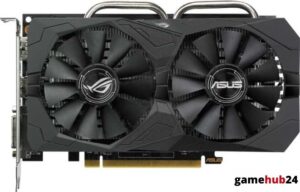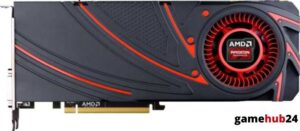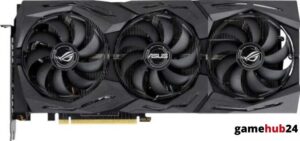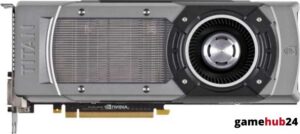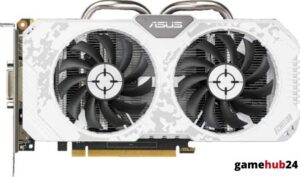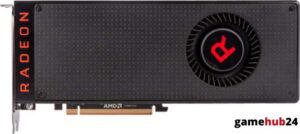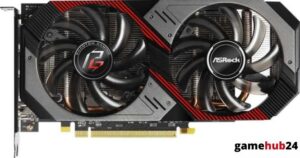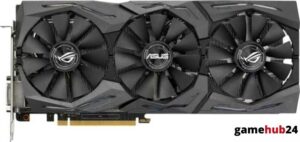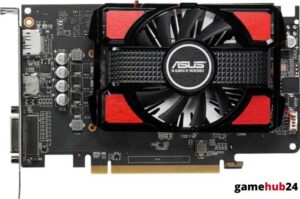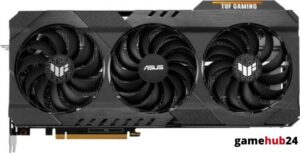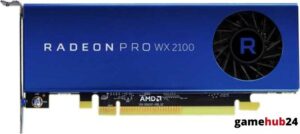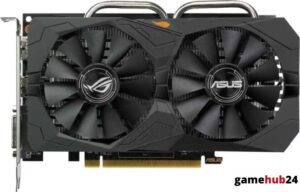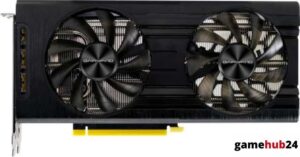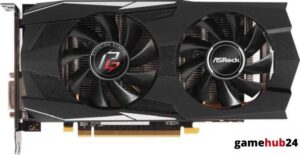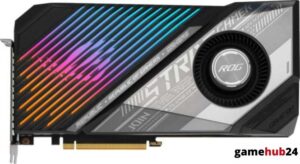High-performance computing relies heavily on GPU chipsets, which provide comprehensive information about their different varieties, producers, and technical details. These potent parts are essential for producing sharp images and improving computer performance in general. This in-depth manual will provide you a complete grasp of this crucial hardware and cover advanced features, installation, setup, and maintenance of GPU chipsets.
GPUs are specialized circuits that speed up the production of images for display devices. They are essential parts of contemporary computing. There are two varieties available: integrated and discrete, each with special benefits. Three major manufacturers—Intel, AMD, and Nvidia—offer GPUs with varying performance levels and features. The amount of cores, VRAM, clock speed, and support for graphics APIs are important technical details. Tensor Cores and real-time ray tracing are examples of advanced technologies that improve computational performance and visual rendering. Installing the GPU requires placing it in a PCI Express slot and setting it up via the operating system. The best GPU performance is ensured by routine maintenance, which includes cleaning and driver upgrades.
- GPUs are specialized circuits for accelerating image creation.
- Integrated and discrete are the two types of GPUs.
- Nvidia, AMD, and Intel are the major GPU manufacturers.
- Number of cores, VRAM, clock speed, and graphics API support are key technical specifications.
- Advanced features like real-time ray tracing and Tensor Cores enhance performance.
- Installation involves inserting the GPU into a PCI Express slot and configuring it.
- Regular maintenance, including cleaning and driver updates, ensures optimal performance.
| Manufacturer | Product Line | Key Features |
|---|---|---|
| Nvidia | GeForce | High performance, real-time ray tracing, AI-enhanced graphics, CUDA cores |
| AMD | Radeon | Strong performance-to-price ratio, excels in multi-threaded processing |
| Intel | Xe | Integrated into CPUs, suitable for casual gaming and multimedia tasks |
This table provides a brief overview of the main GPU manufacturers and their product lines, along with their key features.
What is a Graphics Processing Unit (GPU)?
A dedicated electronic circuit called a Graphics Processing Unit (GPU) is made to quickly operate and change memory in order to speed up the production of images in a frame buffer that are meant to be output to a display device. GPUs are found in game consoles, workstations, mobile phones, embedded systems, and personal computers. Because of their extremely parallel structure, modern GPUs are more efficient than general-purpose CPUs for algorithms that process large blocks of data in parallel. They are also very good at manipulating computer graphics and image processing.
How does a GPU differ from a Video Card?
Although the phrases “GPU” and “video card” are sometimes used synonymously, they refer to distinct hardware components for your computer. Among the components of the video card are the GPU (Graphics Processing Unit), along with video memory (VRAM), a cooling system, and other parts required for the card’s operation and communication with the computer’s other systems. The GPU, which does the bulk of the rendering and processing of graphics, is the heart and soul of the video card.
What is the difference between Integrated and Discrete Graphics?
A GPU that is integrated into the same chip as the CPU is referred to as integrated graphics. While it offers a more energy-efficient choice and shares memory with the CPU, its power consumption is lower than that of discrete graphics. Conversely, discrete graphics describes a stand-alone GPU that isn’t connected to the CPU and has its own VRAM (Video RAM) dedicated memory. Because of its better performance, this kind of graphics is recommended for graphics-intensive jobs like gaming.
Were you aware? With proprietary designs like Turing or Ampere, Nvidia creates its GeForce GPUs, which come with AI-enhanced graphics and real-time ray tracing. The graphics rendering quality is greatly enhanced by these enhancements, making for a more engaging game experience.
Who are the main manufacturers of GPU chipsets?
Three companies dominate the GPU market: Nvidia, AMD, and Intel. The high-performance GeForce GPUs from Nvidia are well-known, and AMD sells a variety of GPUs under the Radeon brand. With the launch of its Xe series of graphics processors, Intel, a company better renowned for its CPUs, has expanded into the GPU industry.
What are the key features of Nvidia GPUs?
GPUs made by Nvidia, especially the GeForce series, are well known for their cutting-edge features and excellent performance. The exclusive Turing or Ampere architecture from Nvidia, which offers capabilities like AI-enhanced visuals and real-time ray tracing, is used in the construction of these GPUs. CUDA cores, which are parallel processors that significantly boost the GPU’s processing capability, are another feature that Nvidia GPUs have, which makes them perfect for both professional and gaming applications.
How do AMD GPUs compare to Nvidia?
AMD GPUs are a competitive competitor to Nvidia and are marketed under the Radeon brand. They have a good performance-to-price ratio to make up for their lack of some of the more sophisticated features, such real-time ray tracing, that are present in the newest Nvidia GPUs. AMD GPUs are a popular option for activities requiring significant computational power, such 3D rendering and video editing, because they also perform exceptionally well in multi-threaded processing.
What role does Intel play in the GPU market?
Although it is a major participant in the CPU business, Intel is relatively new to the GPU sector. With their Xe series of GPUs built into their most recent CPUs, they hope to significantly improve graphics performance over their earlier integrated graphics. Although they aren’t quite as good as expensive discrete GPUs from Nvidia or AMD, Intel’s GPUs are still a good choice for multimedia applications and light gaming.
Advice: You may greatly increase the life of your GPU by doing routine maintenance on it. This entails maintaining its cleanliness, making sure it has enough cooling, and routinely updating its drivers. Maintaining an eye on your GPU’s temperature and making sure its cooling system is operating correctly are crucial because overheating can result in decreased performance and even damage.
What are the technical specifications of GPU chipsets?
Depending on the model and manufacturer, GPU chipset technical characteristics can differ significantly. The number of cores (such as CUDA cores for Nvidia GPUs or Stream Processors for AMD GPUs), the kind and quantity of VRAM, the clock speed of the GPU, and its compatibility with graphics APIs like DirectX, OpenGL, and Vulkan are important factors to take into account.
What are CUDA Cores and Stream Processors?
The parallel processors found in AMD and Nvidia GPUs are called Stream Processors and CUDA Cores, respectively. The calculations necessary for rendering graphics are handled by these cores. A GPU can execute more calculations at once the more cores it has, which speeds up and improves the quality of graphics output. But the GPU’s architecture and clock speed also have a big impact on performance, so it’s not only about core count.
How does Video RAM affect GPU performance?
The memory that the GPU utilizes to store the information required to render images is called Video RAM, or VRAM. A GPU’s performance can be greatly impacted by its VRAM capacity, especially in high-resolution gaming and business applications. Increased VRAM enables the GPU to hold more data, which improves speed by lowering the need to retrieve data from slower system memory. Nevertheless, performance cannot be enhanced by having more VRAM than is required, thus it’s critical to balance VRAM with your unique requirements.
What is the importance of DirectX, OpenGL, and Vulkan in GPUs?
Software can communicate with the GPU through graphical APIs (Application Programming Interfaces) like Vulkan, OpenGL, and DirectX. They offer a collection of functions and commands that software can utilize to manage the GPU’s activities. The variety of apps and games that the GPU can execute depends on support for these APIs. Modern GPUs often offer several APIs, albeit the degree of support varies, which can have an impact on the GPU’s functionality and suitability for various applications.
What are the advanced features of modern GPU chipsets?
Many cutting-edge technologies are built into contemporary GPU chipsets to improve computational and graphics rendering efficiency. These include Tensor Cores, specialized processors that speed up AI computations, and real-time ray tracing, which mimics the physical behavior of light to produce more realistic images. Additional functionalities, such compatibility for virtual reality (VR) and high dynamic range (HDR), can further improve the user’s entertainment and gaming experience.
What are Tensor Cores and how do they contribute to GPU performance?
Certain Nvidia GPUs contain specialized processors called Tensor Cores. They are made to speed up AI calculations, which can be applied to improve other activities like rendering visuals. For instance, Nvidia’s DLSS (Deep Learning Super Sampling) technology, which use AI to upscale lower-resolution photos in real-time while maintaining image quality, can run on Tensor Cores. Tensor Cores are helpful for a variety of professional applications since they can speed up AI computations in non-graphics jobs.
How does Ray Tracing enhance graphics rendering?
A rendering method called ray tracing mimics the actual behavior of light to produce images that are more lifelike. Precisely tracking light beams as they interact with virtual objects, it computes shadows, refractions, and reflections. This produces graphics that are more realistic than those produced by conventional rendering methods. Ray tracing, however, is computationally demanding and needs a strong GPU to function properly. Dedicated ray-tracing cores are built into some contemporary GPUs, like those in Nvidia’s RTX series, to help with these calculations more effectively.
How are GPU chipsets installed and configured?
A GPU chipset must be physically inserted into a PCI Express slot on the motherboard and connected to the power source in order to be installed. To guarantee proper operation after installation, the GPU must be configured via the operating system and drivers must be installed. Additionally, certain GPUs feature multi-GPU configurations, like AMD’s CrossFire or Nvidia’s SLI, which let several GPUs cooperate to improve performance.
What is the role of PCI Express in GPU installation?
A high-speed interface standard called PCI Express (Peripheral Component Interconnect Express) is used to link high-performance components to motherboards, such GPUs. The physical connection and power supply for the GPU are provided by the PCI Express slot, which is where the GPU is placed. The GPU’s performance can be impacted by the PCI Express interface’s speed; quicker interfaces enable the transfer of more data between the GPU and the rest of the system.
How does SLI Technology and CrossFire Technology improve GPU performance?
Multiple GPUs can cooperate to increase performance thanks to Nvidia’s and AMD’s technologies, CrossFire and SLI (Scalable Link Interface). The task of rendering graphics can be shared by two or more GPUs connected via SLI or CrossFire, which improves performance and frame rates in graphics-intensive applications like games. Multi-GPU setups are not supported by all games and software, and the performance improvements can differ based on the setup and the program.
What are the considerations for maintaining GPU chipsets?
A GPU chipset needs to be cleaned, have enough cooling, and have its drivers updated on a regular basis. Dust buildup on the GPU and its cooling system over time may cause overheating and decreased performance. These problems can be avoided by giving the GPU regular cleanings and making sure it has enough ventilation. Enhancing the GPU’s drivers can also help it work better and be compatible with newer games and applications.
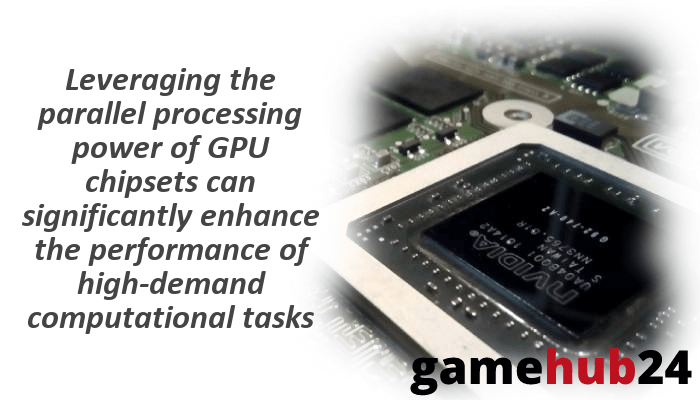
What is the importance of Chipset Cooling?
In order to preserve a GPU’s longevity and performance, chipset cooling is essential. When in use, GPUs produce a lot of heat, which can cause overheating, decreased performance, and even damage to the GPU if it is not properly dispersed. A heatsink, fan, or even liquid cooling system may be included in the majority of GPUs’ integrated cooling systems. An essential component of GPU maintenance is making sure this cooling system is free of debris and dust build-up.
How does GDDR Memory affect the lifespan and performance of a GPU?
The majority of contemporary GPUs employ GDDR (Graphics Double Data Rate) memory as their form of VRAM. The GPU’s performance can be greatly impacted by the quantity and speed of GDDR memory, especially in high-resolution games and business applications. Increased GDDR memory makes it possible for the GPU to store more information, which lessens the need to get information from slower system memory and improves speed. GDDR memory can, however, deteriorate over time like any component, thus to extend the GPU’s life, it’s critical to make sure it’s adequately cooled and maintained.

